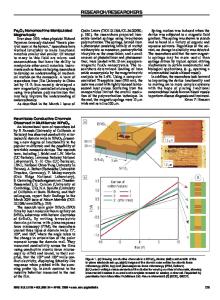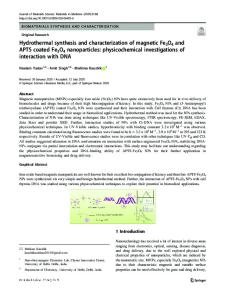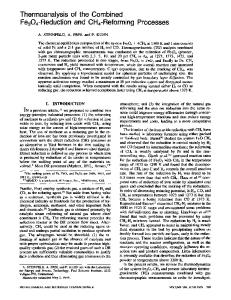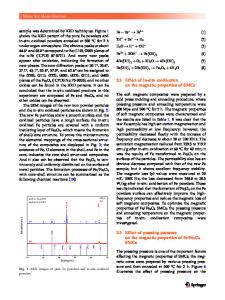The effects of nucleation and growth on the reduction of Fe 2 O 3 to Fe 3 O 4
- PDF / 773,791 Bytes
- 8 Pages / 603.28 x 783.28 pts Page_size
- 67 Downloads / 319 Views
INTRODUCTION I T has been shown in previous investigationst-3 that under certain conditions the reduction of dense hematite to magnetite occurs by a mechanism resembling eutectoid decomposition reactions and results in the formation of a porous product phase. Similar reactions have been observed to occur during the FeO -~ Fe 4-6 and Fe304 ~ Fe 7 transformations. The importance of this product structure lies in the fact that the reducing gas is able to penetrate the product layer and is thus in direct contact with the original oxide thoughout the reduction reaction (Fig. 1). Following nucleation of the product phase at the gas/oxide surface growth occurs equiaxially into the original oxide structure provided the size of the pores formed during the transformation are not so small as to limit the diffusive flux of gaseous species to and from the reaction interface. Under these conditions of uniform equiaxial growth the rate of reaction is controlled by chemical reaction at the gas/parent oxide interface. Reliable data on the chemical reaction rates on the reduction of Fe203 to Fe304 are almost nonexistent, firstly due to the fact that most workers have not concerned themselves with the rate of this single transformation but rather the rate for the complete reduction of hematite to iron and secondly because of insufficient control of experimental conditions to ensure that the composition of the reducing gas mixture is maintained at the reaction interface i.e. that there were no gas starvation problems. In addition to obtaining kinetic data on the reduction of Fe203 to Fe304 the present investigation deals with the phenomenon of an induction period reported by several workerss-n during gaseous reduction of oxides. This is the period of time at the start of the reduction when no apparent weight loss (hence no apparent reaction) occurs. Little quantitative information is available on the nucleation of solids during the reduction of iron oxides. P. C. HAYES is now at the Department of Mining & Metallurgical Engineering, University of Queensland, Brisbane, Australia, P. GRIEVESON is at the Metallurgy Department, Imperial College, London, U.K. Both authors were formerly at Metallurgy Department, Strathclyde University, Glasgow, Scotland. Manuscript submitted March 21, 1980. METALLURGICAL TRANSACTIONS B
This is partly due to the fact that heterogeneous nucleation is so sensitive to lattice imperfections and surface defects that meaningful description of the process is difficult and partly because no simple techniques of estimating nucleation frequency have been devised for these systems. It has been found9 however, that the length of the "induction period" increases with decreasing temperature and with decreasing reduction potential of the gas mixture. It was also shown that increased lattice disorder, as measured by X-ray line broadening decreased the "incubation" period. The kinetic phenomena encountered on reduction of iron oxides can be more easily explained by considering the reduction of a dense spherical oxide particl
Data Loading...











